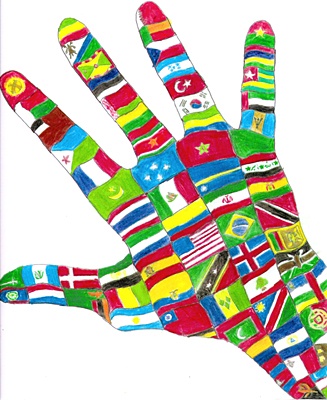All Nonfiction
- Bullying
- Books
- Academic
- Author Interviews
- Celebrity interviews
- College Articles
- College Essays
- Educator of the Year
- Heroes
- Interviews
- Memoir
- Personal Experience
- Sports
- Travel & Culture
All Opinions
- Bullying
- Current Events / Politics
- Discrimination
- Drugs / Alcohol / Smoking
- Entertainment / Celebrities
- Environment
- Love / Relationships
- Movies / Music / TV
- Pop Culture / Trends
- School / College
- Social Issues / Civics
- Spirituality / Religion
- Sports / Hobbies
All Hot Topics
- Bullying
- Community Service
- Environment
- Health
- Letters to the Editor
- Pride & Prejudice
- What Matters
- Back
Summer Guide
- Program Links
- Program Reviews
- Back
College Guide
- College Links
- College Reviews
- College Essays
- College Articles
- Back
The Power of Advertising
ShamWOW! What do you think of when you hear this word? Is it the famous infomercial for super-absorbent towels? If so, those marketers are doing something right. They have engrained that word into viewers’ heads through exaggerating almost every element in the commercial. Granted, the towel could work superbly, but yelling the word, “ShamWOW!” every eight seconds - ShamWOW! - seems superfluous. Exaggeration is one of the most common techniques of television advertisements. Exaggeration makes a product seem to work better than it really does. ShamWOW!
Makeup advertisements are a paradigm of this approach. Applying just one thin layer of foundation will diminish ALL traces of acne, scars, and other blemishes! ShamWOW! Car commercials are also commonly exaggerated. In the 2014 Super Bowl, Audi released an ad featuring a couple deciding on the type of dog they want. The man wants one breed of dog, and the woman wants another. The salesperson suggests that the couple compromise and breed the two dogs together. The commercial gives a glimpse of what a ‘doberhuahua’ would look like, and it is absurd. Not only is the dog hideous to look at, but it’s also extremely disobedient. Finally, the ad closes by stating that people should not have to compromise, but instead get exactly the car, or the dog, they desire.
DirecTV is known for its highly exaggerated domino-effect advertisements. The brief commercials portray a compilation of problems proceeding one into another and all arising from owning standard cable service. One of the ads portrays a man who, because he cannot find anything to watch on television, becomes depressed. Because of his depression, he attends a self-empowering seminar and feels like a winner. When he feels like a winner, he goes to Vegas, loses all his money, ends up poor on a park bench, and finally resorts to selling his hair for money. The moral of the story? If we do not want to end up selling our hair for money, we must invest in DirecTV. It is clearly the only way to ensure that we will not end up broke, lying on a dirty park bench.
What is it about exaggeration that draws television viewers? Could it be the flat-out absurdity of the situation that appeals to our humor? Or the fact that we love to see others in preposterous situations? Take the current Snickers commercials. They always showcase one person who is acting out of place for his or her situation. The original Snickers commercial in this campaign features two teenage girls talking to two guys at a party. However, one of the guys is played by Joe Pesci, a 71-year-old man, significantly older than the other guy. When the girls sense that something about Joe’s character is unusual, the younger man pulls Joe’s character aside and gives him a Snickers bar, instantly transforming him into back into a young, attractive man. The idea behind this is self-explanatory, that eating a Snickers bar will make consumers feel like themselves. Snickers’ motto has long been “Snickers satisfies.” However, the “You’re not you when you’re hungry” campaign satisfies to a whole new level.
Geico, an auto insurance company, is notorious for employing humor and satire in their advertisements. Their mascot, the Geico gecko, has become humanized over the years and depicts the guy-next-door figure, while maintaining his green, gecko physique. Another familiar character is Maxwell the Pig. This tech-savvy pig informs everyone about taking Geico on the mobile. One of Geico’s most famous commercials features a camel walking around a workplace distracting people by shouting “Hump day!” Geico proclaims that people who switch to their company will be happier than a camel on hump day. Why does Geico use these outlandish characters in their commercials? Probably because buying car insurance isn’t the most exciting task a person does in his or her life. It is a heavy responsibility that comes with growing up and owning a car. Adding these energetic characters in their commercials makes a subject as mundane as auto insurance more exciting to think about.
Television advertisements contain various forms of satire, sarcasm, and exaggeration. Almost every commercial incorporates some crazy element that differentiates it from every day monotonous activity. Why else would we buy cleaning rags after seeing them on television? We have to be drawn to the liveliness of the commercial and feel like the product we’re buying will transform our mundane existence. Or else we all just might be stuck buying cable TV and generic brands of candy bars. ShamWOW!

Similar Articles
JOIN THE DISCUSSION
This article has 0 comments.
